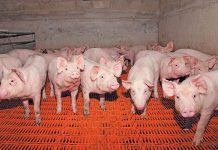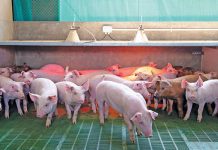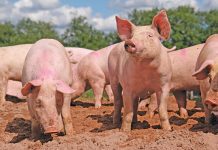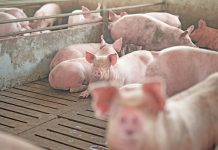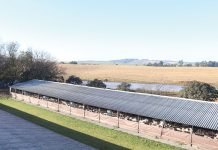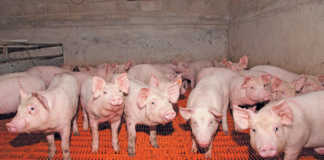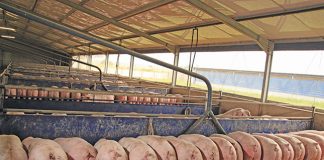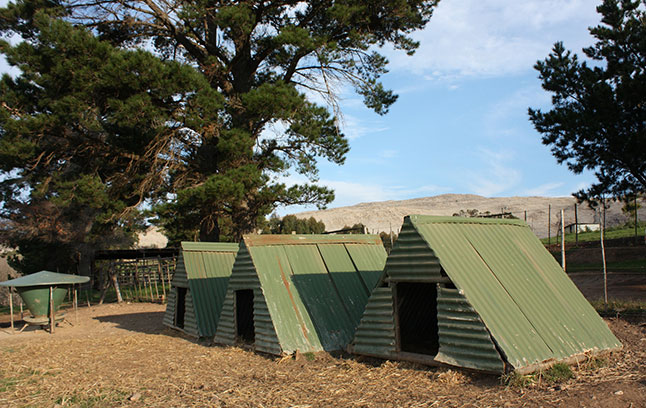
Compared with other livestock such as sheep, goats and cattle, pigs are sensitive animals requiring a higher level of management. However, when farmed properly, they can yield a better financial return because of their breeding rate (10 piglets in a good litter) and a feed-to-meat conversion ratio that is far better than that of other livestock.
They are also market-ready far sooner.
A pig farmer has two options: intensive or free range. In the former, pigs are kept in a high- density, closed housing system. In free-range farming, they are run in smallish camps, foraging on feed crops such as oats, barley, lucerne and even grass. Both systems have their advantages and disadvantages, but the novice pig farmer must also consider other factors before taking the plunge.
Plenty of water
Do you have a reliable supply of clean, cool water available? Water is often called the ‘forgotten nutrient’, and an unreliable supply can lead to serious loss in productivity, disease and even mortality. A young, growing pig requires up to 10l of water a day while an adult pig can drink 25l to 50l a day.
To keep up to 20 pigs, you need a 2 500l tank or larger. Keep at least two days’ water in reserve in case something goes wrong with the pump and repairs have to be made.
To breed or not
Do you plan to breed pigs, or to buy young pigs (weaners) to grow out and sell? It is better to start with weaners, grow
them out and sell them a few times before attempting to breed them.
This will give you experience and an indication of costs. You will also get to understand pigs better and be better able to develop management protocols. Your management skills should be sound when you start breeding, as this process is far more complicated and difficult than rearing pigs.
Infrastructure, disease and overcrowding
Pigs are strong animals but are easily stressed by factors such insufficient feed and water, and severe weather if not housed properly. This will decrease productivity, leading to losses. Pigs need solidly built infrastructure including housing, water troughs and fencing.
Poor management can lead to disease that can quickly destroy your pig farming enterprise. Pigs are susceptible to several diseases such as diarrhoea, particularly in intensive farming systems where crowding may be a problem.
Feed
- What feed will you use?
- Will it be pigswill or leftovers from restaurants or supermarkets?
- Pigs grow more slowly on this unbalanced diet. Or will you feed pigs a commercial balanced pig ration, which is more expensive?
Before buying your first pigs, make sure you can afford to vaccinate and feed them until they are market-ready.
Good genetics
Buy good pigs; never purchase pigs just because they’re cheap. Poorly bred pigs may carry disease, be genetically inferior or take longer to grow to marketable size. They may also have poor body conformation or a poor meat-to-fat ratio. The market may not be satisfied with such pork, and this will affect your good name as a supplier.
Do your homework
Other factors to consider include providing enough shade in a free-range set-up (pigs are susceptible to sunburn), access to straw or sawdust for bedding and a reliable market for the pigs.
Do you have transport available to take the pigs to the market?
Do you have enough time for daily tasks such as feeding, cleaning and care?
Do you see your pig operation as a long-term hobby, or one you plan to grow into a full-time business?
My advice is to first buy a few weaners to grow to adulthood to see if you have a ‘feel’ for pig farming. This will also help you decide whether to farm intensively or free range. It’s important to ensure, however, that your facilities are suitable before the pigs arrive on your farm.
Future articles will deal with factors such as feed cost/budgeting, other feeding options, breeding, animal health, housing design, growth rates, marketing and expanding the enterprise.


